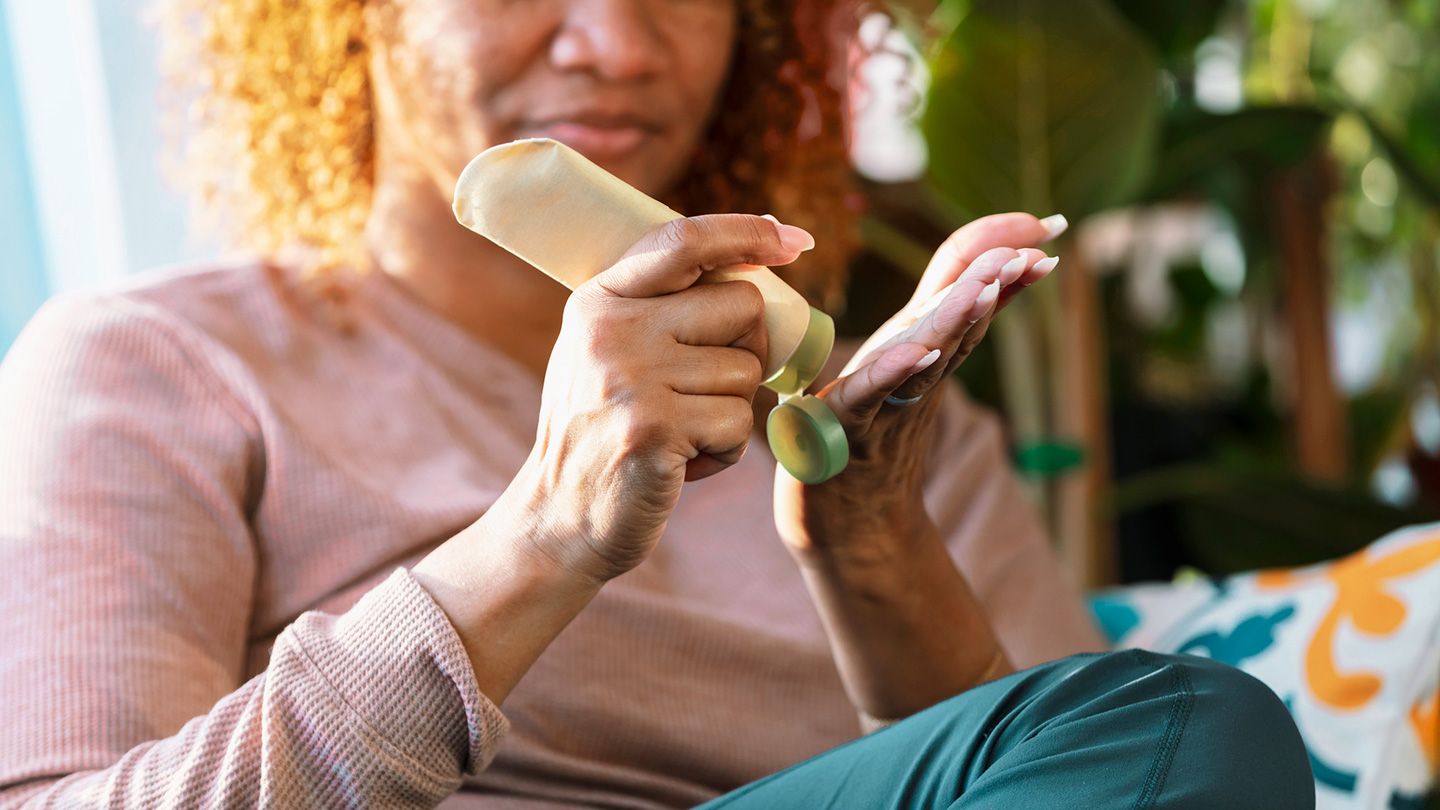More than half of Black and Latina women may regularly use beauty products that contain a chemical heavily implicated in uterine cancer, a small study suggests.
For the new survey, researchers asked 70 Black and Latina women in Los Angeles to log each use of all their personal-care products for one week and take pictures of the labels to document the ingredients.
The study participants documented formaldehyde (or formaldehyde-releasing preservatives) in a wide range of products, including:
- Soap
- Lotion
- Shampoo
- Conditioner
- Skin lightener
- Eyeliner
- Eyelash glue
“We found that this isn’t just about hair straighteners,” said the lead author, Robin Dodson, ScD, an exposure scientist at the Silent Spring Institute in Newton, Massachusetts, in a statement. “These chemicals are in products we use all the time, all over our bodies. Repeated exposures like these can add up and cause serious harm.”
Multiple Preservatives Can Release Formaldehyde
Each time study participants used a product, they logged the information using a smartphone app developed by Silent Spring, a nonprofit scientific research organization that investigates environmental causes of breast cancer.
The app also prompted the participants to take a photo of each ingredient label. Researchers then used optical character recognition technology to translate each product label photo into plain text and look for formaldehyde and formaldehyde-releasing preservatives.
DMDM hydantoin was the most common formaldehyde-releasing preservative. Roughly 47 percent of skin-care products and 58 percent of hair products with formaldehyde-releasing preservatives contained DMDM hydantoin, the study found.
Is Formaldehyde Actually Dangerous?
The study wasn’t designed to prove whether or how formaldehyde or chemicals that release it might directly cause cancer or other health problems.
Industry groups push back at the characterization of these chemicals as dangerous. “Formaldehyde-releasing agents have been used for many decades as a well-studied product preservative method, resin, and antistatic/smoothing agent that are internationally recognized as safe,” says Tesia Williams, a spokesperson for the Personal Care Products Council.
“They are used to preserve product integrity and are widely considered safe and effective in protecting consumer personal care products against a broad spectrum of microbial contamination,” Williams says.
Environmental scientists say that any possible health risks posed by these chemicals likely increase with regular use and with products like hair relaxers, which remain on the skin instead of being washed off like a soap or shampoo.
“Black and Latina women may face higher cumulative exposure, particularly from leave-on products like hair relaxers that are used more frequently and remain on the skin or scalp for extended periods,” says Sharon Horesh Bergquist, MD, an associate professor at Emory University School of Medicine in Atlanta who wasn’t involved in the new study.
“While a single exposure may pose minimal risk, repeated or layered exposure from multiple products increases the potential health concern,” Dr. Bergquist says.
Hair relaxers, which often contain formaldehyde-releasing chemicals and are used by many Black women to straighten curly or tightly coiled hair, have been previously linked to an increased risk of uterine cancer, which disproportionately impacts Black women.
Cancer isn’t the only concern with formaldehyde in beauty products, says Tracey Woodruff, PhD, MPH, a professor and the director of the program on reproductive health and the environment at the University of California in San Francisco.
“Formaldehyde is known to increase many health risks beyond cancer, including respiratory-related problems like asthma and asthma exacerbation and allergic conditions, and there are concerns for reproductive effects as well,” says Dr. Woodruff, who wasn’t involved in the new study.
White Beauty Ideals May Put Women of Color at Risk
Quoted in the Silent Spring Institute’s statement, Janette Robinson Flint, the executive director of the Los Angeles–based nonprofit Black Women for Wellness, said that many Black consumers use a variety of personal care products with formaldehyde and other toxic ingredients in an effort to conform to white beauty ideals.
Black women may have learned to avoid products with formaldehyde on the label, but they still use lots of products with chemicals that go by other names and release formaldehyde.
“We shouldn’t have to be chemists to figure out what kinds of products will make us sick,” Flint said in the statement.
Formaldehyde and Formaldehyde-Releasing Preservatives Go By Many Names
- Formalin
- Formic aldehyde
- Methanal
- Methyl aldehyde
- Methylene glycol
- Methylene oxide
And these are some of the chemicals used as preservatives that can release formaldehyde:
- Benzylhemiformal
- 2-bromo-2-nitropropane-1,3-diol
- 5-bromo-5-nitro-1,3-dioxane
- Diazolidinyl urea
- DMDM hydantoin (1,3-dimethylol-5,5-dimethylhydantoin)
- Imidazolidinyl urea
- Sodium hydroxymethylglycinate
- Quaternium-15
Reducing exposure can be difficult, because formaldehyde is released by a range of preservatives listed under so many different chemical names, Bergquist says.
“One of the most practical ways to minimize risk is to simplify your routine,” Bergquist says. “Use fewer products overall, and be especially mindful of the ingredients in those used frequently or daily.”
Read the full article here




